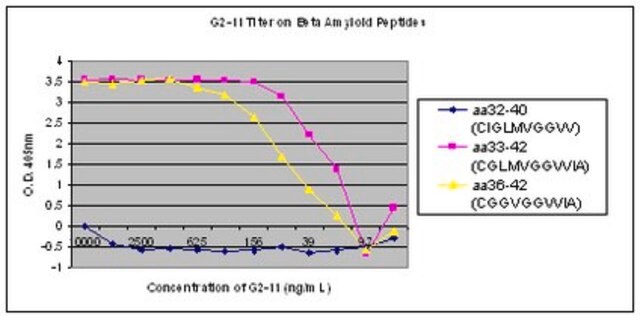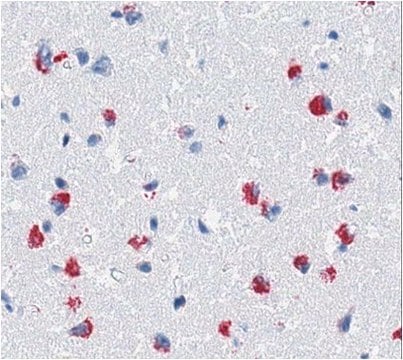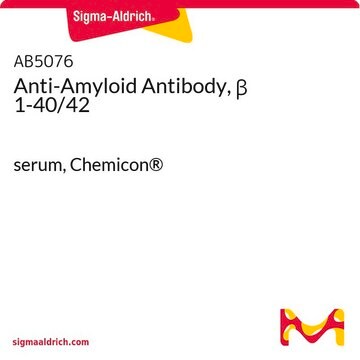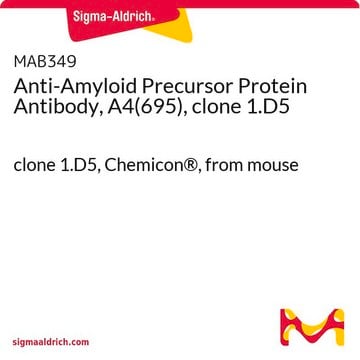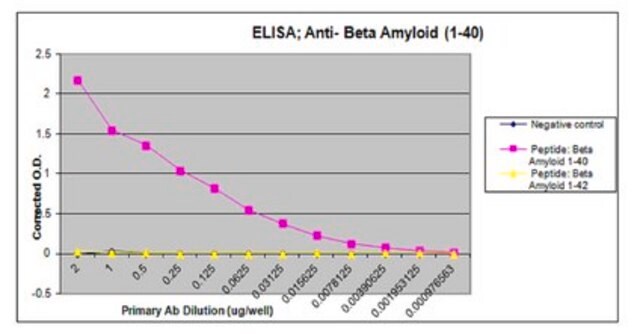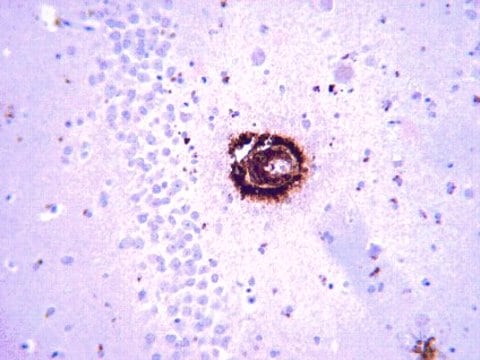MABN254
Anti-amyloid beta peptide (MOAB-2), pan Antibody, clone 6C3
clone 6C3, from mouse
Synonym(s):
Amyloid beta A4 protein, ABPP, APPI, APP, Alzheimer′s disease amyloid protein, cerebral vascular amyloid peptide, CVAP, PreA4, Protease nexin-II, PN-II
About This Item
Recommended Products
biological source
mouse
Quality Level
antibody form
purified immunoglobulin
antibody product type
primary antibodies
clone
6C3, monoclonal
species reactivity
human
technique(s)
dot blot: suitable
immunofluorescence: suitable
immunohistochemistry: suitable (paraffin)
immunoprecipitation (IP): suitable
western blot: suitable
NCBI accession no.
UniProt accession no.
shipped in
wet ice
target post-translational modification
unmodified
Gene Information
human ... APP(351)
General description
Specificity
Immunogen
Application
Western Blot Analysis: A representative lot was used by an independent laboratory in unaggregated forms of Aß42 and Aß40. (Youmans, K.L., et al. (2012). Mol Neurodegener. 7;8.)
Dot Blot Analysis: Serial Aβ40 and Aβ42 dilutions were probed with MOAB-2 or 6E10 by an independent laboratory. (Youmans, K.L., et al. (2012). Mol Neurodegener. 7;8.)
Immunoprecipitationt Analysis: A representative lot was used by an independent laboratory in unaggregated and fibrillar forms of Aß42 and Aß40. (Youmans, K.L., et al. (2012). Mol Neurodegener. 7;8.)
Neuroscience
Neurodegenerative Diseases
Quality
Immunohistochemistry Analysis: A 1:1,000 dilution of this antibody detected Amyloid Beta Peptide in human Alzheimer′s diseased brain tissue.
Target description
Physical form
Storage and Stability
Analysis Note
Alzheimer′s diseased human brain tissue.
Other Notes
Disclaimer
Not finding the right product?
Try our Product Selector Tool.
Storage Class Code
12 - Non Combustible Liquids
WGK
WGK 1
Flash Point(F)
Not applicable
Flash Point(C)
Not applicable
Certificates of Analysis (COA)
Search for Certificates of Analysis (COA) by entering the products Lot/Batch Number. Lot and Batch Numbers can be found on a product’s label following the words ‘Lot’ or ‘Batch’.
Already Own This Product?
Find documentation for the products that you have recently purchased in the Document Library.
Our team of scientists has experience in all areas of research including Life Science, Material Science, Chemical Synthesis, Chromatography, Analytical and many others.
Contact Technical Service
